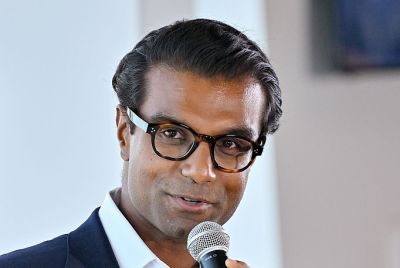Google Wishes Indian Festival Pongal with New Doodle
Internet search giant Google Inc. has joined India's celebration of Pongal or also known as Makar Sankranti festival with new Doodle, which has painted kites and flying balloons on its homepage. Makar Sankranti is a major harvest festival celebrated in various parts of India.
Google has put out the new Doodle with painted kites and flying balloons. The Google name is clearly seen in the homepage, the word G has been imprinted in a flying balloon followed by kites with OOGLE in it and some clouds are behind the image.
The harvesting festival was celebrated to mark the transition of the Sun from Dhanu zodiac (Sagittarius) into Makara zodiac (Capricorn) on its celestial path. People in the northern parts of India celebrate Makar Sankranti by offering thousands of their colorful oblations to the Sun in the form of beautiful kites.
Millions of people take a dip in places like Ganga Sagar (the point where the river Ganges meets the Bay of Bengal) and Prayag and pray to the Sun God (Surya). It is celebrated with pomp in southern parts of India as Pongal, and in Punjab as Maghi. It is celebrated differently in all the regions of India.
This festival is celebrated in almost every village with adventurous games in South India. The so called 'tradition' continues to play a major role in the festival, whether it is the cock fights in Andhra Pradesh, bull fighting in Tamil Nadu or Elephant Mela in Kerala, besides a huge amount of illegal betting.
Makara Sankranti is celebrated in Kerala at the Hindu pilgrimage center Sabarimala where the celestial star Makara Jyothi is visible followed by the Makara Vilakku celebrations. The main worshipping rituals are performed at the day of Makara Sankaranthi (every January 14) day. It draws the second largest number of pilgrims in the country. The huge crowd who witness the favourable event has been on the rise every year. In 2010, it is believed that the crowd has touched 1.5 million to witness the Makara Jyothi light.
Google Doodle
The concept of the doodle was born in 1998 when Google founders Larry Page and Sergey Brin played with the corporate logo to indicate their attendance at the Burning Man festival in the Nevada desert.
A stick figure drawing was placed behind the 2nd 'o' in the word Google and the revised logo was intended as a comical message to Google users that the founders were 'out of office.' While the first doodle was relatively simple, the idea of decorating the company logo to celebrate notable events was well received by their users.
A year later in 2000, Larry and Sergey asked current webmaster Dennis Hwang, an internship at the time, to produce a doodle for Bastille Day. Pleased with the result, Dennis was then appointed Google’s chief doodler and doodles became a regular occurrence on the Google homepage.
In the beginning, the doodles tended to celebrate largely visible holidays; nowadays, doodles represent a wide array of events and anniversaries from the Olympics to the Mars Rover landing. The doodle team has created over 300 doodles for Google.com in the United States and over 700 have been designed internationally.
Clicking on a Google Doodle links to a string of Google search results about the topic, which can drive a lot of traffic to unsuspecting sites.
In 2011, Google has so far created three doodles other than Makara Sankranti one. Those are: Japan's holiday Coming of Age Day; Lebanese American artist, poet, and writer Khalil Gibran's birthday; and New Year Day with Roman number MMXI (2011) featuring fireworks along with G and E, for full story please click here.
On May 21, 2010, Google created a doodle to celebrate the 30th birthday of Pac-Man. It is their first (possibly the world's first) playable logo. The logo contains an accurate re-creation of the Pac-Man game that can be played in a browser (it contains 255 levels). On July 11, 2010, the 2010 FIFA World Cup Final was commemorated by a Google doodle showing the stadium where the match was played that night.
Google shows a special colorless logo from time-to-time on a local homepage in recognition of a major tragedy, often for several days. The design was apparently first used on the Google Poland homepage after the air disaster that killed President Lech Kaczy?ski in April 2010. A few days later, the logo was used in China and Hong Kong to pay respects to the victims of the Qinghai earthquake.
On December 23, 2010, Google launched their holiday logo to celebrate Christmas. The logo was a combination of 17 images with each image referring to a cuisine, an instrument or a place, such as Nepal. For full story please click here.
© Copyright IBTimes 2025. All rights reserved.





















